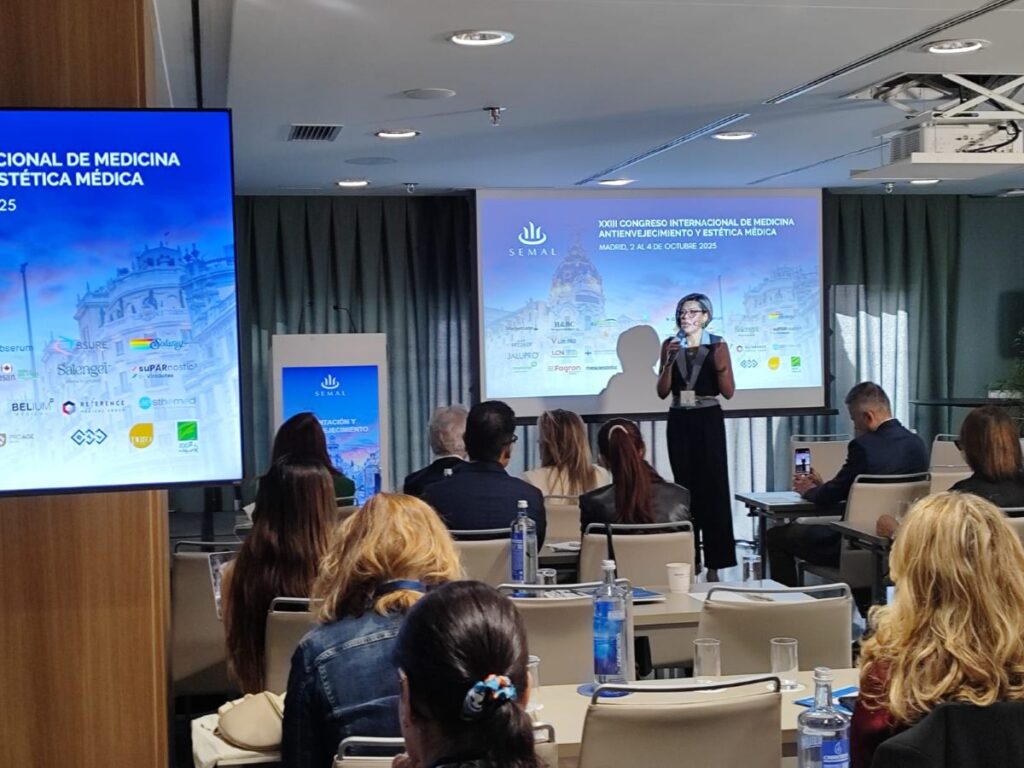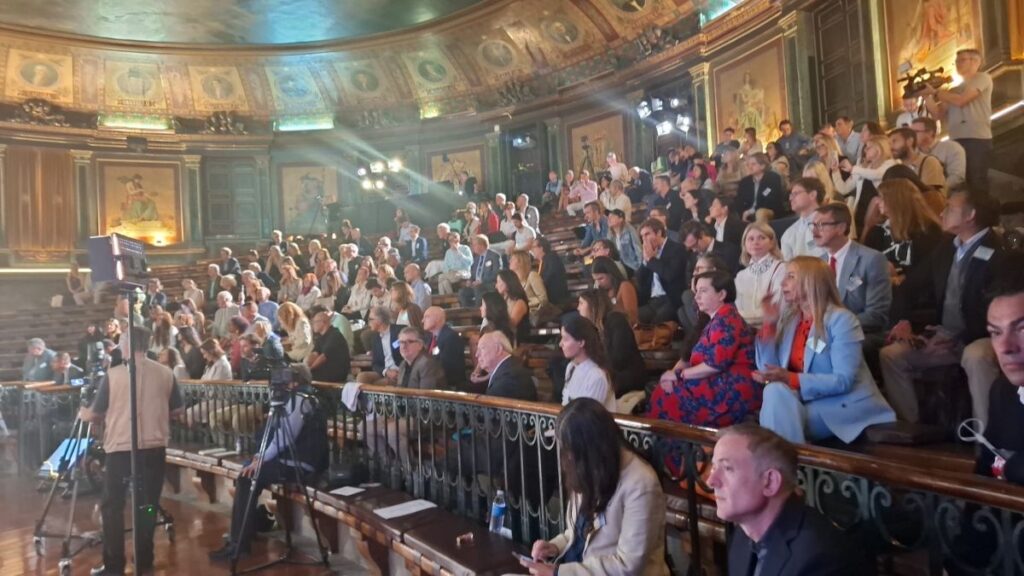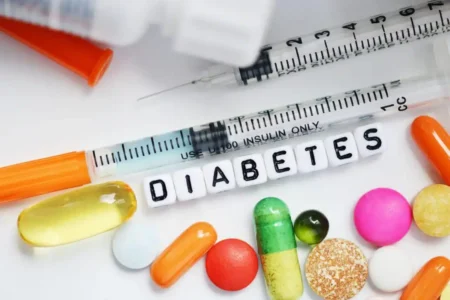From 1 to 4 October, Madrid became the world epicentre for longevity and regenerative medicine with the joint celebration of TransVision Madrid 2025 and the XXIII International Congress of the Spanish Society of Anti-Ageing and Longevity Medicine (SEMAL)). For four days, the capital brought together scientists, doctors, entrepreneurs and industry leaders to reflect on the most promising advances in health, longevity and human well-being.
You can find the interviews and videos of the events on our networks and YouTube channel.
The first two days, the Official College of Doctors of Madrid hosted the TransVision Congressorganised by the International Longevity Alliance (ILA) and supported by ICOMEM itself. The event was attended by figures of the stature of Mehmood KhanCEO of the Hevolution Foundation; George ChurchHarvard and MIT professor; Ray Kurzweilinventor and futurist; Aubrey de GreyCEO of the LEV Foundation; Andrea Maierfounder of the Healthy Longevity Medicine Society; Steve Horvathof Altos Labs; María BlascoDirector of the CNIO, and João Pedro de Magalhãesof the University of Birmingham, among others.
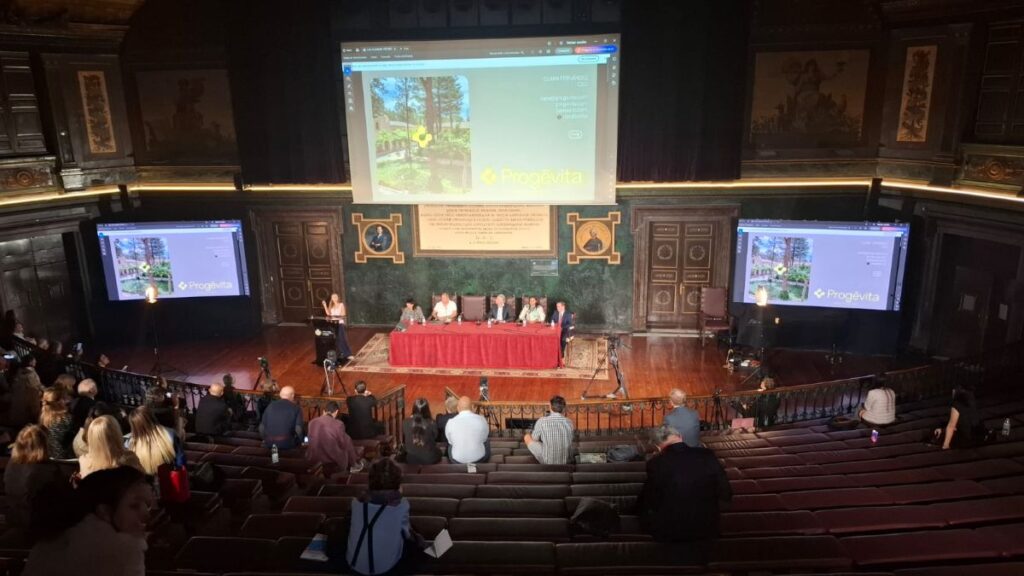
Sessions ranged from cellular models of ageing to epigenetic therapies, immunology, prevention and the economic impacts of an ageing population. Madrid was recognised as longevity capital of the European UnionThe event was attended by representatives of the City Council and the Community, as well as personalities from the medical and business fields.
One of the most significant moments was the March for Longevityin which researchers, clinicians and citizens walked the streets of the centre of Madrid to read the Madrid Declaration on Longevity before the country's main institutions. This symbolic gesture was intended to raise the legislator's awareness of the need to democratising the right to longevityThe conference was a forum for the promotion of public policies that prioritise investment in prevention, health and education over military spending. TransVision was not only a scientific congress, but a social movement that vindicates the role of science as a tool for peace and human progress.
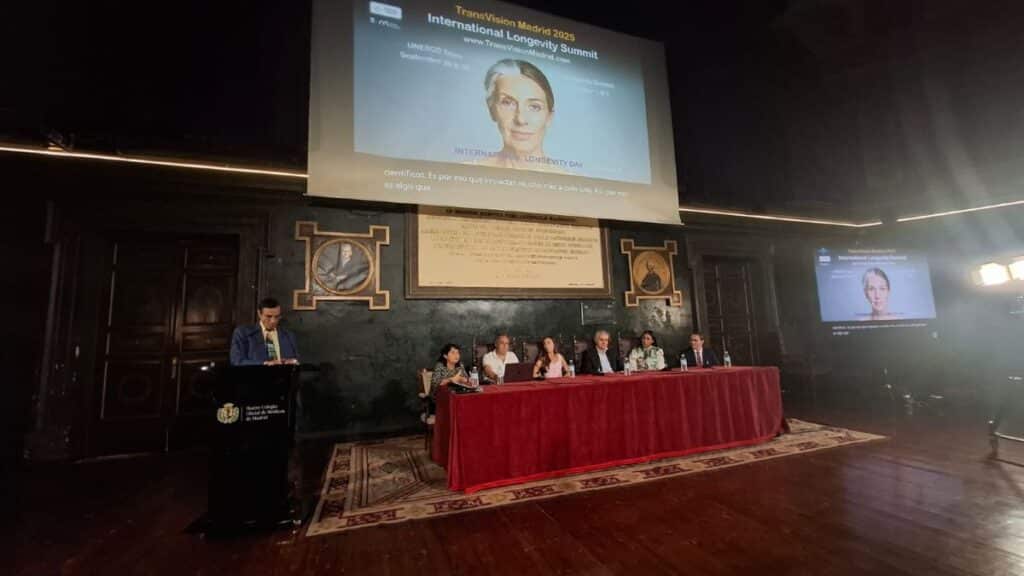
The central message was clear: longevity should not be a privilege, but a universal right. Experts agreed that the real challenge is not just to prolong life, but to ensure that every year gained is lived with quality, autonomy and purpose.
On 3 and 4 October, the spotlight shifted to the Hotel NH Madrid VentasThe XXIII SEMAL International Congresswhere more than a hundred presentations, debates and workshops were held, consolidating Spain's scientific leadership in the field of medical longevity and advanced aesthetics.
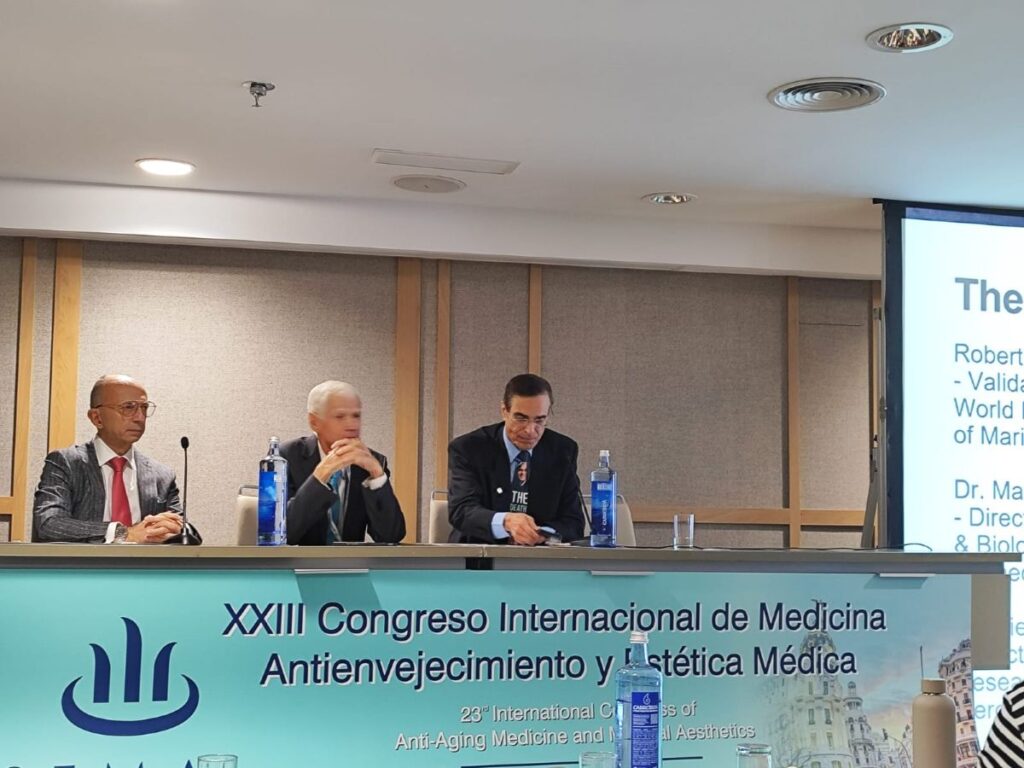
Under the chairmanship of Dr. José Serres and the scientific direction of the Prof. Manuel CastilloThe meeting brought together international leaders in the fields of ageing biology, regenerative medicine, functional medicine and clinical research. At the Anti-Ageing RoomThe event featured presentations from key figures such as the Prof. Arturo Fernández-Cruzwho gave a keynote lecture on "Modulation of biological clocks and DNA repair"; the Dr. Ángel Duránteza pioneer of longevity medicine in Spain and founder of the Neolife clinic; the Dr. Vicente Meraof SHA Wellness Clinicinternational benchmark in preventive medicine and clinical gerontology; the Prof. José Viñaa world leader in biogerontology; and the Prof. Consuelo Borrása specialist in gender differences in biomedical research.
The congress was also attended by renowned experts such as Prof. Darío Acuña, Prof. Germaine Escames, Prof. Mónica de la Fuente, Dr. Miguel Garber, Mr José Luis Cordeiro, Phil Newman, Prof. Mike Chan, Dr. Jesper Eugen-Olsen, Dr. Claudio Tomella, Dr. Luis F. Jaime Montalván, Dr. María Trinidad Herrero, Dr. Jordi Ibáñez, Dr. Andoni Jauregui, Dr. Jair Tenorio, Dr. Alberto Melón, Dr. Marta Ballesteros, Dr. José Manuel Miralles, Dr. Vicente Navarro, Dr. Rubén del Río, Dr. César Arroyo, Dr. Vicente Navarro, Dr. Dévora Nuevo, Dr. Paula Fabero, Dr. Ángeles Flores, Dr. Julián Bayón, Dr. Laura Bermejo, Dr. Jorge Cubrías, Dr. Sandra Arias, Dr. Paloma Tejero, Dr. Petra Vega, Dr. Ramón Vilarovira, Dr. Mercedes Eguiluz, Dr. José Mª Serra Renom, Dr. Jorge Planas, Dr. Frank Niessen, Dr. Natalia Gennaro, Dr. Adriana Elichirigoity, Dr. Germaine Escames, Dr. Diego del Ojo, Dr. Viviane Campos, Dr. Carlos Morales, Dr. Dagné Pupo, Dr. Alessandro Montanari, Dr. Mariano Vélez, Dr. Marusia Fontes, Rafa Madorrán, Marcos Vázquez, Ismael Galancho, Tamara Páez, D. Guillermo Santos, Dr. Ángel Posadas, Dr. Natalia Elejalde, Dr. Paola Tarantino, Dr. Fernando Aznar y Dr. Óscar Suárezamong many others.
The programme included sessions on neuronal regeneration, mitochondrial dysfunction, epigenome modulating nutraceuticals, mitonuclear longevity o hyperbaric medicineto round tables dedicated to the microbiotathe genomics applied to longevitythe meditation and quantum consciousnessand the new challenges of biohacking and hormesis. High-impact clinical areas were also addressed, such as the bioidentical hormone therapythe sexual health and gynaecological aestheticsthe facial and body flaccidityand the new laser and biostimulation technologies.
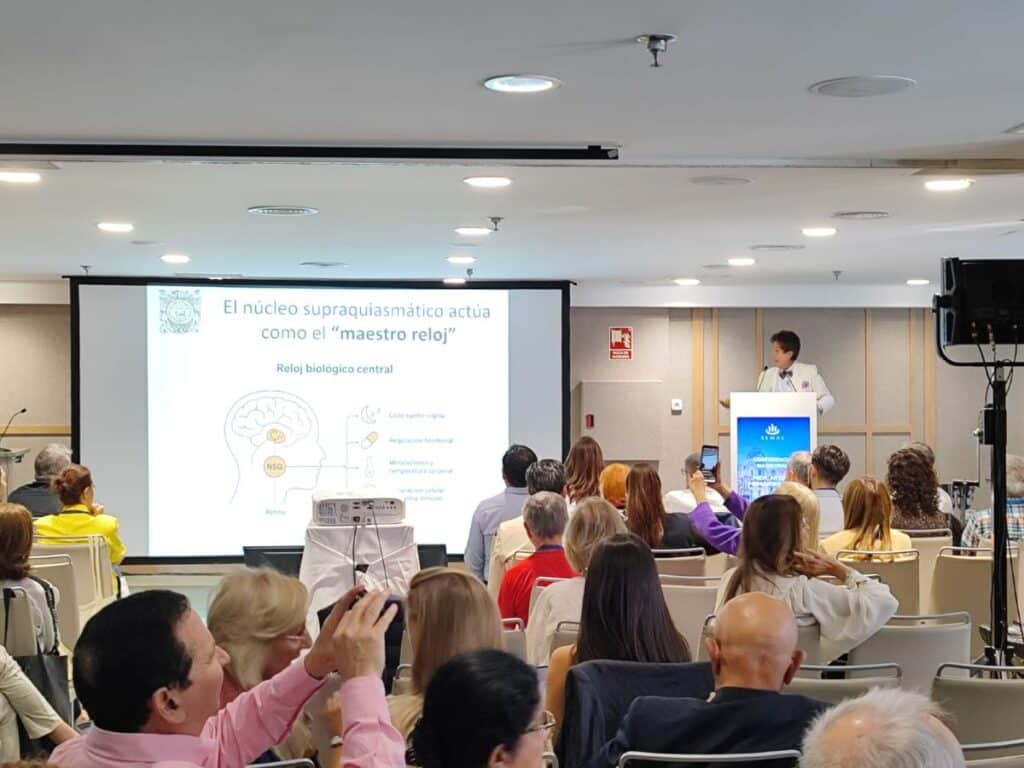
Madrid as a longevity hub and strategic destination
The union of TransVision and SEMAL in the same temporal and geographic space was not accidental: it represents a deliberate strategy to position Spain as a innovation hub, exhibition and partnerships in the longevity sector.
What makes Spain (and Madrid in particular) an interesting destination for brands, laboratories and manufacturers of anti-ageing diagnostics?
- Consolidated scientific ecosystemWith institutions such as the CNIO, public hospitals, biomedical research centres and emerging groups in ageing, Spain offers a solid base for translational collaborations.
- High life expectancy as a competitive advantageSpain is among the countries with the highest longevity averages, which gives it credibility to act as a welfare laboratory.
- Evolving regulatory frameworkThe symbolic impulse of the march and the advocacy agenda seek to induce legal changes - for example, tax incentives for prevention, greater public investment in biomedicine, regulatory recognition for innovative therapies - that favour the establishment of companies in the sector.
- Gateway to Latin America and EuropeThe language, time zone and cultural links make Spain an ideal platform for regional expansion.
- Visibility, networking and professional marketThe trade exhibition at SEMAL, the presence of world-class speakers and the mix of academia, clinic and entrepreneurship created an ecosystem conducive to partnerships, product launches and attracting investment.
TransVision's advocacy march and SEMAL's scientific strength together constitute a strategic roadmap: to demonstrate that longevity is not an elitist aspiration, but a collective cause that requires regulatory, institutional and citizen commitment.
In their rightful convergence, TransVision and SEMAL have achieved more than just bringing together speakers or showcasing technical advances: they have installed a powerful, symbolic and ambitious narrative: longevity as a right, science as a social driver and policies as the bridge to a future in which living longer can mean living better for all.
And Madrid, these days, was not only the scene of congresses; it was the crossroads where science, citizenship and influence met to claim with firm step that democratic longevity starts with legislators who prioritise prevention, not bullets.
